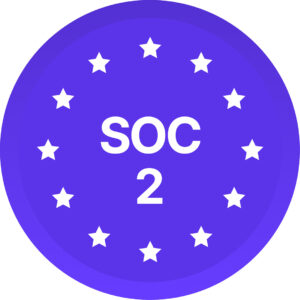Systemic racism remains one of the most enduring challenges facing the United States, affecting every facet of life, from education and healthcare to criminal justice and the workplace. Dr. Martin Luther King Jr., a pivotal figure in the Civil Rights Movement, devoted his life to dismantling these systemic barriers. While his speeches and writings often focused on overt forms of segregation, he also spoke eloquently about the insidious ways racism is embedded in societal structures. Let’s explore systemic racism—particularly in the workplace—and calls for meaningful action to address these persistent inequities.
What is systemic racism?
Systemic racism refers to the ways in which institutional policies, cultural norms, and societal structures perpetuate racial inequity, often without the explicit intent to discriminate. Unlike individual acts of racism, which are overt and intentional, systemic racism operates through entrenched systems that advantage one group over another. These systems have roots in historical injustices, such as slavery, segregation, and discriminatory laws, whose impacts persist across generations.
Dr. King articulated the structural nature of racism in his speech ‘Remaining Awake Through a Great Revolution’— “It is an unhappy truth that racism is a way of life for the vast majority of white Americans, spoken and unspoken, acknowledged and denied, subtle and sometimes not so subtle — the disease of racism permeates and poisons a whole body politic.” This observation underscores the pervasive nature of systemic inequity and its normalization in society.
However, addressing systemic racism often requires moving beyond the narrow, individualistic understanding of racism that dominates public discourse. Many people become preoccupied with proving that they are “not racist,” focusing on avoiding overtly discriminatory actions or language. This defensiveness can detract from addressing the larger systems of inequity that perpetuate harm. Dr. King’s work challenges us to see racism as not merely a matter of individual prejudice but as a deeply embedded societal issue that requires collective action to dismantle. By shifting the conversation from individual intent to systemic impact, we can better address the root causes of inequality.
Systemic racism in the workplace
1. Employment disparities
Systemic racism manifests starkly in employment. Black workers, for example, are often relegated to lower-paying jobs, face higher unemployment rates, and are disproportionately excluded from leadership roles. A 2019 study by the Economic Policy Institute found that Black workers earn, on average, 73 cents for every dollar earned by white workers, even when controlling for education (Gould and Wilson, 2020).
These disparities are even more pronounced for Black women, who face the dual challenges of systemic racism and sexism. The wage gap for Black women is wider than for their male counterparts, with Black women earning just 64 cents for every dollar earned by white men. This intersection of race and gender highlights the compounding nature of discrimination.
Dr. King highlighted the link between economic justice and racial equality in his fight for workers’ rights. During the 1968 Memphis Sanitation Workers’ Strike, he supported Black workers who faced unsafe conditions and poor pay. Declaring that “all labor has dignity,” King argued in support of a living wage and union rights for the workers. This emphasizes that racial equity in the workplace is foundational to societal progress.
2. Hiring bias and advancement barriers
Implicit bias plays a significant role in perpetuating systemic racism in hiring and promotions. Studies reveal that job applicants with “white-sounding” names are significantly more likely to receive callbacks than those with “Black-sounding” names, even when qualifications are identical (Bertrand & Mullainathan, 2004).
For LGBTQ+ individuals of color, these barriers can be even more pronounced. A study by the Williams Institute found that LGBTQ+ employees of color were more likely to report workplace discrimination compared to their white LGBTQ+ peers (Mallory et al., 2024). This intersection of race, gender identity, and sexuality magnifies the challenges they face in securing employment and advancing their careers.
3. Microaggressions and workplace culture
Even when Black employees enter predominantly white workplaces, they often face microaggressions—subtle, everyday acts of exclusion or bias. These interactions create hostile work environments, hinder productivity, and contribute to high turnover rates among them.
The impact of microaggressions is compounded for Black women and LGBTQ+ individuals, who navigate intersecting layers of marginalization. For example, a Black transgender woman may experience not only racism but also transphobia and sexism in the workplace, making her journey toward inclusion and equity even more challenging.
4. Education
Educational disparities rooted in systemic racism affect access to quality jobs. Schools in predominantly Black neighborhoods often receive less funding, leading to overcrowded classrooms, outdated materials, and limited extracurricular opportunities. These inequities create cycles of poverty that can be difficult to break.
For children from low-income Black families, these disparities are further exacerbated by the intersection of race and class. Poverty limits access to early childhood education, extracurricular activities, and college preparatory resources, perpetuating systemic inequity. Dr. King recognized education as a critical pathway to equality. Achieving this goal requires addressing systemic barriers that undermine educational equity.
5. Criminal justice
Systemic racism in the criminal justice system disproportionately impacts Black communities. Policies such as mandatory minimum sentences and stop-and-frisk practices have led to the over-policing and mass incarceration of Black individuals, especially Black men. According to the NAACP, Black Americans are five times more likely to be stopped without just cause than white Americans (NAACP, 2020).
For Black individuals from low-income backgrounds, the intersection of race and class compounds these disparities. Economic disadvantage often limits access to quality legal representation, increasing the likelihood of harsher sentences.
Dr. King’s activism highlighted the intersection of racial and legal injustice within the justice system. In “Letter from a Birmingham Jail” he wrote, “Law and order exist for the purpose of establishing justice and when they fail in this purpose they become the dangerously structured dams that block the flow of social progress” (King, 1958).
6. Healthcare
Healthcare disparities are another critical facet of systemic racism. Black Americans are more likely to experience chronic health conditions and less likely to receive adequate medical care. The COVID-19 pandemic highlighted these inequities, with Black individuals experiencing higher infection and mortality rates (Robertson et al, 2022).
These disparities are again further amplified for Black female, trans, gender-diverse, and queer individuals, who often face further stigma and discrimination in healthcare settings. Dr. King’s assertion that “of all the forms of inequality, injustice in health is the most shocking and inhumane” underscores the moral imperative to address these disparities (King, 1966).
Addressing systemic racism
Dr. King’s teachings provide a roadmap for addressing systemic racism. His strategies combined direct action, policy advocacy, and a vision for cultural change. Here are actionable steps inspired by his legacy:
- Policy reforms: Advocate for laws that promote workplace equity, such as pay transparency, anti-discrimination measures, and diversity hiring initiatives. We provide bespoke consulting services including policy audits and DEI strategy creation.
- Education and training: Implement comprehensive diversity, equity, and inclusion training in workplaces, emphasizing the importance of bias mitigation. Reach out to us to schedule training sessions on Race and Racism in the Workplace, Race and Ethnicity, Being an Ally, and Unconscious Bias.
- Community investment: Support programs that address disparities in education, healthcare, and housing, which contribute to workplace inequities.
- Empathy and allyship: Foster inclusive environments by encouraging employees to listen to and amplify the voices of marginalized colleagues.
- Accountability: Hold organizations and leaders accountable for measurable progress in addressing systemic racism. The Diversio dashboard lets you measure and track your employees’ sense of inclusion and engagement over time.
Conclusion
Systemic racism, particularly in the workplace, continues to perpetuate inequality and limit opportunities for Black people. Dr. Martin Luther King Jr.’s enduring legacy reminds us that dismantling these systems requires a combination of structural reforms and cultural transformation. By drawing on his vision and taking intentional actions, we can move closer to the equitable society he dreamed of.
References
- Bertrand, M., & Mullainathan, S. (2004). Are Emily and Greg More Employable than Lakisha and Jamal? A Field Experiment on Labor Market Discrimination. American Economic Review, 94(4), 991-1013. https://doi.org/10.1257/0002828042002561
- Robertson, M. M., Shamsunder, M. G., Brazier, E., Mantravadi, M., Zimba, R., Rane, M. S….Nash, D. (2022). Racial/Ethnic Disparities in Exposure, Disease Susceptibility, and Clinical Outcomes during COVID-19 Pandemic in National Cohort of Adults, United States. Emerging Infectious Diseases, 28(11), 2171-2180. https://doi.org/10.3201/eid2811.220072.
- King, M. L. Jr. (1958). Stride Toward Freedom: The Montgomery Story. Harper & Row.
- King, M. L. Jr. (1966). Convention of the Medical Committee for Human Rights, Chicago, IL.
- King, M. L. Jr. (1968). All Labor has Dignity. Speech delivered in Memphis, TN.
- Gould, E. & Wilson, V. (2020). Black workers face two of the most lethal preexisting conditions for coronavirus—racism and economic inequality. Economic Policy Institute. Retrieved from https://www.epi.org/publication/black-workers-covid/#:~:text=Significant%20wage%20gaps&text=No%20matter%20how%20you%20cut,cents%20on%20the%20white%20dollar.
- Sears, B., Castleberry, N, Lin, A., & Mallory, C. (2024). LGBTQ People’s Experiences of Workplace Discrimination and Harassment. Williams Institute. Retrieved from https://williamsinstitute.law.ucla.edu/publications/lgbt-workplace-discrimination/
- NAACP. (2020). Criminal Justice Fact Sheet. Retrieved from https://www.naacp.org/resources/criminal-justice-fact-sheet
Our newsletter and blogs feature personal opinions and diverse perspectives on diversity and inclusion. While individual articles may not reflect every reader’s view, we value the diversity of opinions and respect our contributors’ insights.

